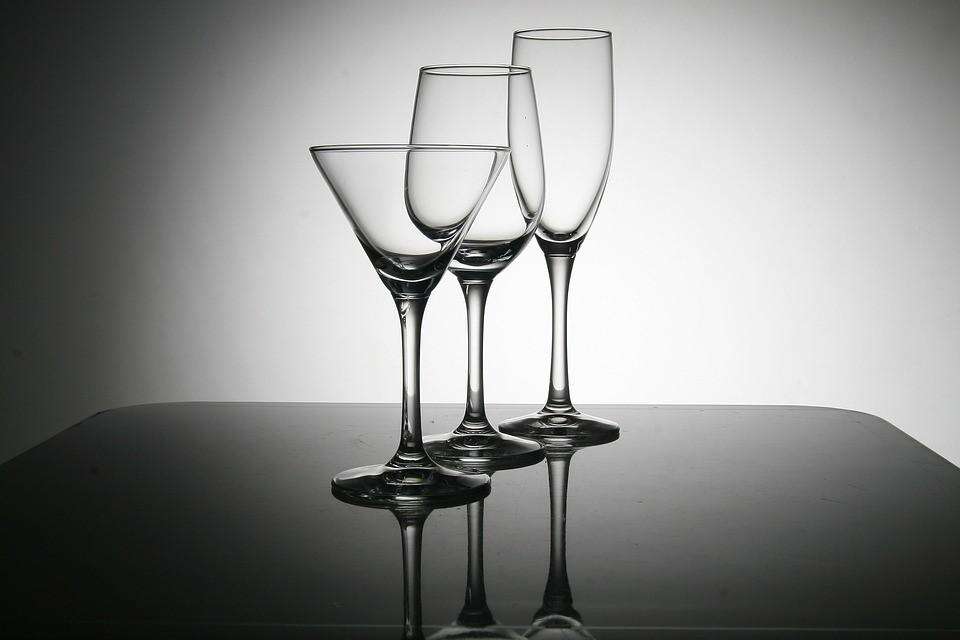Glass Shape and Design Can Influence How Wine Tastes


There was time, not so long ago, when bars at home had carefully stacked rows of glasses that could be easily classified into – crystal glasses for whiskey, mugs for beer, shot glasses for shots and goblets for wine. But then, someone, somewhere changed the rules of the game and now, people are buying different glasses for different wines.
The trend was first introduced by Raymond Postgate, the famed creator of the Good Food Guide, who in his book Plain Man’s Guide to Wine, published in 1951, talks about five traditional glass shapes and designs meant for sherry, claret, port, champagne and hock, respectively.
Not so long after Postgate linked different glass shapes to different wines, a ninth-generation glassmaker from Austria, named Claus Riedel, came up with his own theory of effect of glass shapes on wine.
While launching a range of wine-specific glasses in 1961, he noted “wide, open glass shapes require us to sip by lowering the head, whereas a narrow rim forces the head to tilt backwards so that the liquid flows. This delivers and positions the beverage to different ‘taste zones’ of the palate”.
For the longest time, this perception of glass shape and design influencing the taste of wine was considered strictly for the ‘purists’. The common man could well drink his wine from a box or plastic cups. Such exposure to an assortment of wine glasses with different shapes, designs and thickness – all glistening nonetheless – was limited to an occasional fine dining experience.
Of course, today with the growing exposure, thanks to the internet, and an improved standard of living, the discussion around the influence of glass shape and design on the taste of wine is becoming mainstream.
Here are some interesting insights about the complex relationship between taste, smell and sight of wines and the role of different shapes of glasses in it:
According to Postgate’s theory:
- V-shaped glasses are used to serve sherry to create an illusion of quantity
- Champagne is served in a broad rimmed and flat glass, so that one can see their drink clearly, even in the dim lighting of a pub or restaurant
- Colored glass is used to serve hock as a guise for its inferior quality
- A colorless, tulip shaped glass is picked to serve fine wine
But Postgate’s theory has been bashed and discarded as bemoaning of fancy glassware. There are several schools of thought about how, if at all, glass shape and design can influence the taste of wine. Of these, the most widely accepted is that shape and design of a glass can make a marginal difference by delivering different types of wines to different taste zones on the tongue:
- Glasses with tapered rim design are designed to direct wine to centre of the tongue, where the acidity receptors are believed to be concentrated. By preventing the flow of wine to either side of the mouth, these glasses can deliver a punch of flavor where it hits the most.
- The delightfully tall and narrow flutes are normally used to serve champagne, as they can hold the fizz for a lot longer as compared to a broad rim glass. This ensures that a person going slow on their drink doesn’t end up with flat champagne in the end. Also, the tall and narrow shape ensures that you can feel the fizz right at the base of your tongue.
- Aromatic wines are normally served in a broad and buxom wine goblet to make sure that the aroma from the spirit reaches you before you actually taste it. This is because of sense of taste does not operate in isolation. How a thing smells and looks also influences our perception of its taste.
Different glass shapes, along with the temperature at which the wine is served, can bring out different bouquets and finishes to the flavor of the same wine. When served at the right temperature and in the right glass, most wines exhibit a ring-shaped vapor pattern that causes the alcohol concentration around the rim to be higher than that in centre.
Therefore, the shape of a wine glass plays an extremely sophisticated role in the process of tasting and enjoying the true flavors of the spirit.
Disclaimer: non-newz.com does not advocate drinking alcohol.
Please do not drink alcohol if you are under the minimum drinking age. If you are an adult, drink to enjoy the occasion and always in moderation. We recommend, that you should avoid drinking alcohol if you plan to drive, if you are pregnant or on any medication.
.jpg)
